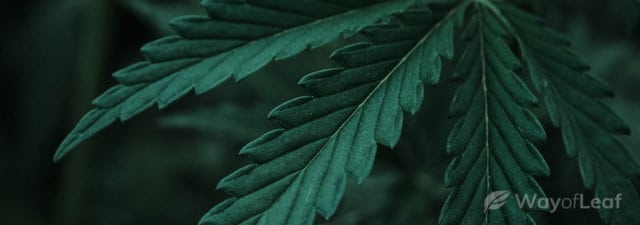At the time of writing, we know of 113 cannabinoids in the marijuana plant. Tetrahydrocannabinol (THC) and cannabidiol (CBD) are the best known. Even when you focus on these two only, you see the significant differences between them. The primary reason we know more about them than the others is because they are the most abundant cannabinoids in weed.
For decades, we assumed that THC and CBD were the leading players in cannabis’ potential medicinal benefits. The lack of research into the plant, due to its prohibition, hasn’t helped matters. As more scientists gain access to weed for research purposes, they have discovered that other, less prevalent cannabinoids are at least partially responsible for marijuana’s medicinal properties.
While we won’t discuss all 113 cannabinoids, we will focus on 10 of the most important, including the big two. Read to learn more about these compounds and their possible effects on your health.
What Is a Cannabinoid?
It is one of a class of chemical compounds that act on the CB (cannabinoid) receptors in our endocannabinoid system (ECS). Around 40 years ago, scientists speculated that cannabinoids produced behavioral and physiological effects through an interaction with cell membranes.
Upon the discovery of the first cannabinoid receptors in the 1980s, we learned a great deal about how weed and its cannabinoids impact body and mind. We are well aware of the CB1 and CB2 receptors, and GPR55 is possibly a third. Likely, others are waiting to be discovered. The next time you see the glistening trichomes on a marijuana plant near harvest, remember that you are looking at where the cannabinoids are primarily stored.
Cannabinoids and the Endocannabinoid System
Researchers discovered the ECS in the late 1980s. It is located throughout the central and peripheral nervous systems, and it helps regulate the body in a bid to create balance or homeostasis. The cannabinoids in marijuana can bind to the CB1 receptor sites (primarily in the brain), and CB2 receptor sites (mainly in the body).
The cannabinoids produce varying effects depending on which receptor site they bind to. Cannabis strains contain a massive array of cannabinoids that bind to these sites once consumed. This is why weed is such a versatile healer, according to its proponents.
Cannabinoids begin as cannabinoid acids that activate when heated; a process known as decarboxylation. When you heat your weed, either in the oven or when you light up a joint or bowl, you remove the acid from the molecule and turn it into a bioavailable compound registered by the body. For example, THCA turns into THC when decarboxylated. Therefore, if you consume raw cannabis, you won’t enjoy the psychoactive high you crave because you have not activated the THC.
Marijuana is not the only plant to contain phytocannabinoids. Species such as Acmella oleracea, Radula marginata, and Echinacea Angustifolia contain these compounds. Lipophilic alkamides (alkylamides) from the Echinacea species are probably the best-known cannabinoids that DO NOT come from weed. Researchers have discovered 25 alkylamines to date, some of which have an affinity to the CB 2 receptor.
Administering Cannabinoids & the Cannabis Plant’s Profile
You can ‘consume’ cannabinoids by smoking, vaping, IV injection, suppository, sublingual absorption, transdermal patch, topicals, and via oral ingestion. When cannabinoids enter your body, the liver metabolizes them. IV injection provides the highest bioavailability, followed by vaping. With methods such as oral ingestion and sublingual absorption, as little as 10-20% is absorbed by the body.
Marijuana plants exhibit a considerable variation in the type and quantity of cannabinoids they produce naturally. In the modern era, selective breeding enables growers to control the plant’s genetics. As a result, they can cultivate strains with a particular cannabinoid profile.
For instance, the hemp plant is bred for a higher CBD content, while marijuana growers are continually trying to create a higher THC level. While the cannabis plant rarely contains more than 1% of any cannabinoids other than THC or CBD, we will soon get to the stage where breeders will grow plants featuring high percentages of lesser-known cannabinoids. This is especially the case if research proves the other cannabinoids have significant medical potential.
Now, let’s take a look at 10 of the most important cannabinoids in marijuana. First, we will provide a brief overview of each.
At the end of the article, we have included a table outlining the potential benefits and effects of each.
1. THC – Tetrahydrocannabinol

Also known as Delta 9-THC, tetrahydrocannabinol is the most widely researched, and best-known cannabinoid of all. When you get ‘high,’ it is THC that is responsible. Yechiel Gaoni and Raphael Mechoulam first isolated THC in 1964. In 1988, Dr. Allyn Howlett found the link between THC and the ECS.
His research discovered that THC binds itself to the CB1 receptors in the brain. The result is the release of dopamine by the ECS, which leads to the feelings of relaxation and euphoria associated with weed. When under the influence of THC, side effects include an impact on your concentration levels, not to mention your memory, sensory perception, and movement.
A study by Boehnke et al., published in Pharmaceuticals & Medical Technology in February 2019, found that almost 65% of all medical marijuana patients say that chronic pain is the reason they use weed. This data is hardly a surprise. In 2018, the CDC released a report that said over 50 million Americans live with chronic pain.
THC has 20 times the anti-inflammatory strength of aspirin!
2. CBD – Cannabidiol

CBD has recently hit the mainstream, marketed as providing “healing without the high.” It has morphed from a niche industry to a multi-billion dollar one in the space of a few years. Cannabinol is generally the second most abundant cannabinoid in the marijuana plant and the most prevalent in industrial hemp.
In December 2018, the President signed the Farm Bill into law. It legalized industrial hemp growth in the United States; a situation that has galvanized what is an already thriving industry. At the time of writing, CBD-derived from hemp is legal in 47 states. It is also allowed in Idaho, but only if you meet strict criteria. It is only available to a handful of patients with intractable epilepsy in Nebraska and is entirely illegal in South Dakota.
Dr. Roger Adams and his University of Illinois team first discovered CBD in 1940. However, researchers didn’t understand the structure until 1963.
Unlike THC, CBD does not directly activate our brain’s CB1 receptors, meaning users don’t feel the same intoxicating effects. Instead, CBD seems to increase the level of endocannabinoids (2-AG and anandamide) in the body. There is evidence that CBD interacts with brain cells, including opioid receptors, which regulate pain, and dopamine receptors, which control behavior.
CBD potentially inhibits the adverse side effects associated with THC. A study by Aso et al., published in Molecular Neurobiology in 2019, looked at CBD’s impact on THC’s effects. The team found CBD indirectly blocks THC’s effects on the CB1 receptors by elevating the activation of adenosine type IIa receptors. This particular receptor counteracts the actions of CB1 receptors.
As it affects THC’s actions on the brain’s hippocampus, CBD can prevent THC from impacting new memory formation.
Research shows CBD potentially has dozens of therapeutic benefits but does NOT cause a psychoactive high.
3. THCV – Tetrahydrocannabivarin

THCV has a similar molecular structure to THC but possesses fewer carbon atoms. It has potential intoxicating effects but there is so little of it that you don’t get high from THCV. The compound is believed to act as an agonist to some of THC’s effects in small amounts but potentially accentuates them in larger doses. If you find a strain with a lot of THCV, effects include a clear-headed psychedelic high that doesn’t last long but provides you with a burst of energy.
Interestingly, researchers have found plants with high levels of THCV in Cannabis sativa plants in Pakistan, India, Thailand, China, and Afghanistan. Indeed, some plants contain THCV levels of 53% of total cannabinoids! Oddly enough, THCV is not listed as a Schedule I drug. However, as it is usually classified as an analog of THC, it shares the famed cannabinoid’s prohibited status.
THCV binds to the CB1 and CB2 receptors in the ECS. The process of binding is dose-dependent. The level of research into this cannabinoid has increased exponentially in recent times, as its apparent health benefits become known.
One of its most probable uses is as an appetite suppressant. Remember, the ECS regulates appetite. Another benefit was discovered in a study by Jadoon et al., published in Diabetes Care in October 2016. In the study, the team found that THCV could help assist individuals with type 2 diabetes by controlling glycemic levels.
THCV is popular amongst individuals who have struggled to lose weight.
4. CBDV – Cannabidivarin

This cannabinoid has a similar structure to CBD and is also non-intoxicating. Researchers discovered it in 1969, but it was subject to limited research until very recently. CBDV is known for its anticonvulsant effects, which occur through the activation of an ion channel in the peripheral and central nervous system called TRPV1. It acts as a receptor and plays a role in the modulation of pain, as well as in its transmission.
You will find higher levels of CBDV in strains with a lot of CBD. Primitive landrace strains in the Northern Indian mountains should also contain a relatively large amount of this cannabinoid. Please note, CBDV is not water-soluble in significant amounts, and its bioavailability rate is below 6% in humans when consumed orally.
One of the most likely benefits of CBDV is the reduction of epileptic fits. A study by Amada et al., published in PeerJ in November 2013, found that it reduced the expression of genes linked to epilepsy. Other research suggests that CBDV has a potent anticonvulsant effect on a range of epileptic seizures.
CBDV is another non-intoxicating cannabinoid that is being researched for its neurological effects, as well as the potential treatment of epilepsy.
5. CBG – Cannabigerol

CBG is arguably one of the two most essential cannabinoids of all, yet few people have ever heard of it. It is the chemical parent of THC and CBD. In other words, both cannabinoids begin as CBG and wouldn’t exist without it. Although marijuana strains contain less than 1% of this cannabinoid, it is essential to produce the cannabinoids which provide medicinal benefits.
Researchers discovered CBGA, the acidic form of CBG, in the 1970s. They soon realized that CBGA was the precursor of better-known cannabinoids. CBG comes from a process called biosynthesis, which is based on chemical reactions that result in other chemical components.
A pair of these components, olivetolic acid and geranyl pyrophosphate, combined to create CBGA, which was possibly the first cannabinoid. After CBGA is mixed with certain enzymes, it becomes CBCA, CBDA, and THCA. As you know from reading this guide up to now, cannabinoids with ‘A’ at the end are acidic, and available in live plants or ones recently harvested. They become non-acidic when exposed to heat or oxidative degradation.
While CBG is mainly known as the building block of other cannabinoids, it has possible therapeutic benefits in its own right. A study by Valdeolivas et al., published in Neurotherapeutics in January 2015, found that CBG had neuroprotective properties in mice with Huntington’s Disease.
CBG may be the molecular “building-block” for both THC and CBD.
6. CBC – Cannabichromene

Earlier, we wrote that THC and CBD are the two most abundant cannabinoids in marijuana. While that is true in most cases, CBC takes second place in a significant number of strains. Overall, it is the third most common cannabinoid in weed. Researchers first discovered cannabichromene in 1966.
It directly interacts with the ECS’ CB1 and CB2 receptors but also works with other receptors such as TRPA1 and TRPV1. Intriguingly, CBC shares the molecular formula of CBD and THC, which is C21H30O2. However, the chemical properties and atoms differ in all three compounds. In case you were wondering, CBC is non-intoxicating.
According to data from the 1970s, you will find massive levels of CBC in landrace strains from India. It is more prevalent than CBD in a surprising number of strains. CBC also works well when combined with other cannabinoids in what is called the ‘entourage effect.’
As for its medical benefits, a study by Nakajima, Nakae, and Yasukawa, published in the Journal of Pharmacy and Pharmacology in May 2013, studied the effects of cannabinoids on mice with inflammation and skin tumors. The team discovered that CBC helped encourage new cell growth.
There is more CBC than CBD in many marijuana strains.
7. CBN – Cannabinol

When looking through the history of cannabinoids, we often assume that CBD was isolated first. However, some sources say that Robert Sidney Conn, a British chemist, uncovered cannabinol in the 1930s.
CBN is created when the marijuana plant’s THC degrades due to age or exposure to light. When ingested, Cannabinol provides you with a sedative effect that makes it ideal if you have insomnia. Steep Hill Labs claims that just 5mg of CBN is a more effective means to relax the body than 10mg of Valium.
In general, weed lovers don’t want to find CBN in their cannabis because it is a sign of old and stale herb. However, you shouldn’t throw it away if your goal is to get a decent night’s sleep. When archaeologists uncovered a 2,700-year-old grave in China, they found weed containing almost 800 grams of CBN!
It is a mildly intoxicating cannabinoid linked with a reduction in pain. A study by Zygmunt et al., published in The Journal of Neuroscience in June 2002, found that a combination of THC and CBN could significantly decrease pain levels.
CBN is not produced naturally in the cannabis plant but is rather the result of the breakdown of THCA over time.
8. THCA – Tetrahydrocannabinolic Acid

Despite the name, THCA does not share THC’s intoxicating properties. You only find it in raw and live cannabis. It is usually the main constituent of resin concentrates where it comprises anywhere from 50% to 90% of the weight. It is the acidic form of THC and converts to the psychoactive compound when exposed to heat via decarboxylation.
Despite its importance, there is relatively little research into the compound. There is a study by Rock et al., published in The British Journal of Pharmacology in October 2013, that showed THCA reduced nausea and vomiting in rats.
You will find an abundance of THCA in any strain high in THC, which has not been decarboxylated. If you fancy testing THCA for yourself, you can try juicing fresh cannabis. Brands such as Mary’s Medicinals sell raw marijuana products.
If you want THCA, try raw cannabis without decarboxylating it.
9. CBDA – Cannabidiolic Acid

CBDA is the acidic precursor to CBD and is also non-intoxicating. You will find CBDA in raw hemp or any raw marijuana strain high in CBD, such as Charlotte’s Web. As is the case with THCA and THC, CBDA becomes CBD when decarboxylated.
For a long time, researchers believed that CBDA, and therefore raw hemp, had no medical benefit until it was turned into CBD. However, CBDA does have an impact on the body. Like CBD, it does not directly interact with the ECS’s receptors. Instead, it activates the 5-HT1A serotonin receptors. As you may know, serotonin is a neurotransmitter type found in the brain. It regulates anxiety, sleep, nausea, anxiety, and mood.
A study by Shbiro et al., published in the October 2017 edition of European Neuropsychopharmacology, found that CBDA elicited antidepressant effects on rodents at doses up to 100 times lower than CBD! The likely reason is the increased serotonin levels it produces.
CBDA potentially has impressive antidepressant properties, even more so than CBD!
10. CBGa – Cannabigerolic Acid

CBGA is the single most crucial cannabinoid as it is the precursor of all cannabinoids found in the marijuana plant. It is often called ‘the mother cannabinoid’ because, without it, there would be no other cannabinoids! Imagine a world where weed didn’t get you high or provide you with therapeutic benefits. You can thank CBGA for that not being the case.
It is a non-intoxicating cannabinoid and seems to act as a low-affinity antagonist to the CB1 receptors. Researchers continue to study whether CBGA impacts the CB2 receptors. The majority of medicinal marijuana strains contain CBGA that isn’t quickly converted into other cannabinoids.
Once you heat the plant material, however, CBGA turns into CBD, which is utilized by the body. If you find a strain high in CBGA, you’ll be able to convert it into usable CBD. Hemp probably contains a reasonable degree of CBGA because of a recessive gene seldom found in other marijuana strains.
At present, there is minimal research on CBGA’s medical benefits. Instead, it is being researched for its role as the main building block in cannabinoids.
Without CBGA, there would be no medicinal benefits of cannabis whatsoever!
Final Thoughts on the Best Cannabinoids in Marijuana
Ultimately, we have barely scratched the surface when it comes to determining the benefits of marijuana’s cannabinoids. There are approximately 113 of them, and fewer than 10% have been researched to any degree. Then there is the small matter of the hundreds of other compounds we have yet to delve into.
As cannabis prohibition relaxes, we hope it provides scientists with the opportunity to perform as many studies as possible to finally determine the uses of marijuana. Keep reading to view our handy chart, which gives you the potential benefits of each cannabinoid on this list.
Top Cannabinoids Summary
Cannabinoid | Intoxicating? | When Was It Discovered? | Possible Benefits & Effects |
|---|---|---|---|
THC | Yes | 1964 |
|
CBD | No | 1940 |
|
THCV | Yes | N/A |
|
CBDV | No | 1969 |
|
CBG | No | Circa 1970s |
|
CBC | No | 1966 |
|
CBN | Yes | Possibly 1930s |
|
THCA | No | N/A |
|
CBDA | No | N/A |
|
CBGA | No | The 1970s |
|
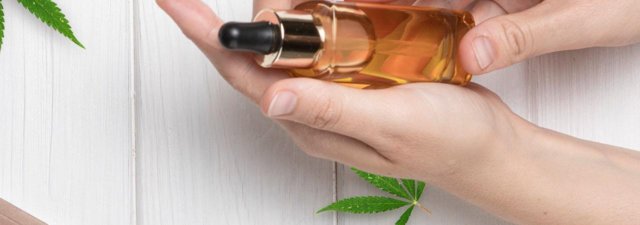
![How Is Delta 8 Made? [A Full Explanation]](https://marijuanabreak.com/wp-content/uploads/2021/06/wol-banner-how-is-delta-8-made-640x225.jpg)

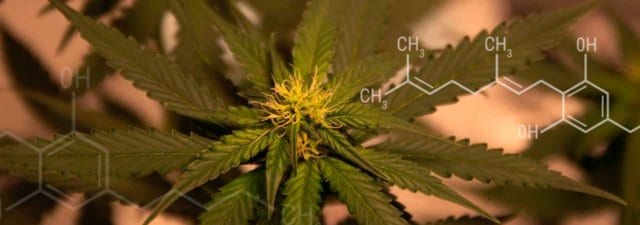
![Why Does Marijuana Make Your Heart Race? [The Science Behind]](https://marijuanabreak.com/wp-content/uploads/2019/10/wol_why-does-marijuana-make-your-heart-race-640x225.jpg)
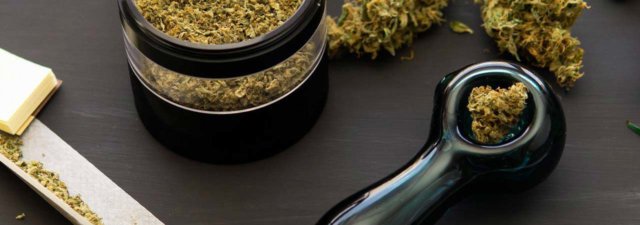


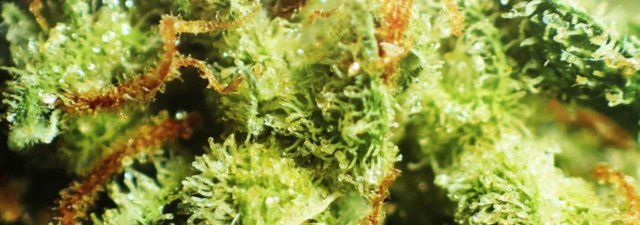
![How Much THC is in a Dab, Bowl, and a Joint? [Explained]](https://marijuanabreak.com/wp-content/uploads/2019/03/wol_1920x450-39-640x225.jpg)

